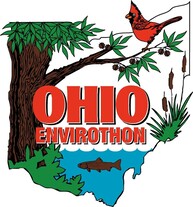What you Need to Know
Students are expected to:
- Identify wildlife species that are common in Ohio ecosystems
- Use a taxonomic key to identify wildlife species
- Describe how a given organism is adapted for survival in its particular environment
- Describe how energy flows through ecosystems
- Discuss the roles of producers, consumers, and decomposers in food chains/webs and give examples
- Define and give examples of these types of symbiotic relationships: parasitism, commensalism, mutualism
- Distinguish between native species and invasive species
- Distinguish among endangered, threatened, and extirpated Ohio species and describe methods that could be used to improve their status
- Identify factors affecting population size and population growth
- Discuss the effect of limiting factors in controlling population size and give examples
- Discuss the significance and life cycles of major insect pollinators, as well as some of the problems their populations are facing
- Identify some diseases that are currently affecting Ohio wildlife
- Discuss practices that governmental agencies and the public can employ to conserve and protect wildlife
- Identify significant governmental laws, policies and acts that have been passed to protect endangered and threatened species
Study Guide |
Past Tests |

